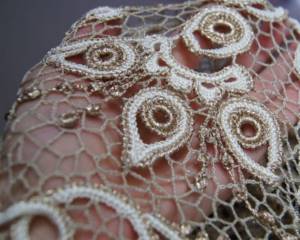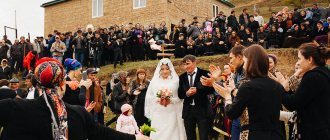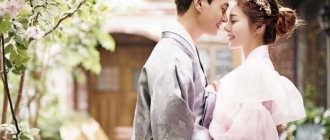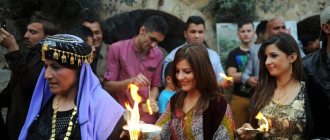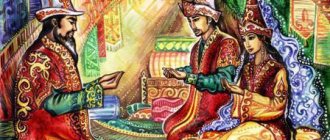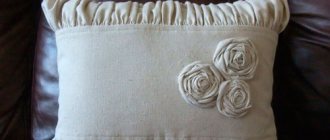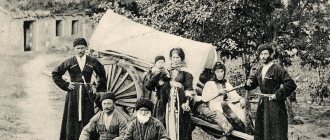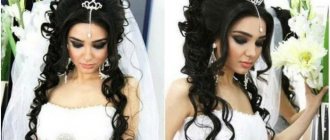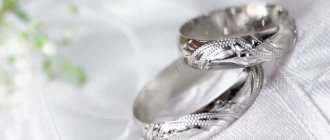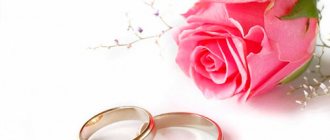Steps to the wedding
Before the newlyweds walk down the aisle, it is customary in Ireland to perform an engagement ceremony. In many other countries, engagement is a purely symbolic moment before the wedding, a relic of the past.
Irish wedding rituals are strictly observed and engagement is one of them. Lovers must be friends in the literal sense of the word for up to two years. And only then, step by step, they begin preparing for the wedding.
- Matchmaking and dinner after it. The parents of the newlyweds and the newlyweds themselves meet in the bride's house. The priest and relatives are also invited there. Be sure to roast the goose - as a sign that the groom has already been “plucked”, that is, he has tidied up his hands.
- After agreements have been reached, the wedding date is set. The best day is considered St. Patrick's Day - March 17th. April is also considered favorable. The autumn harvest months are the worst for weddings, according to Irish customs.
- Until the wedding day, the bride's parents have the right to come to the groom's house at any time and see how they will be received.
- Likewise, young people should not be left alone. The groom's brother and other relative are always sent with them.
Invitations are sent to guests in advance, indicating the date and time of the holiday. Wedding invitations are usually made in white and green colors. To create the desired mood, add pictures of a shamrock - a symbol of Ireland, or comic images of a leprechaun - a gnome guarding a pot of gold. Also a symbol of fun in Ireland is the violin, the Celtic harp. They are also fashionable to use for invitations.
The wedding venue is an open-air area with a lot of greenery and trees.
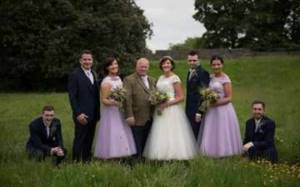
Horseshoe of luck
It is customary among the Irish to invite the groom to the bride's parental home before the celebration and cook a goose in honor of his arrival. In Ireland, brides wear a horseshoe . a cloth horseshoe tied around their wrist . To prevent luck from slipping away, the horseshoe must point upward. In an alternative method, the wedding cake is decorated with horseshoes. The use of horseshoes as wedding gifts is another famous Irish tradition. After the celebration is over, a horseshoe should be hung over the door so that good luck continues to come to the house.
Traditions associated with the bride's dress
Perhaps the most interesting thing in wedding decoration will be the bride’s outfit. The traditional white dress is replaced with a sky blue dress.
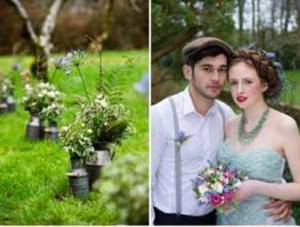
A few more details related to the image of the bride.
- Irish fairies are hunters of everything beautiful. The bride is the most beautiful girl at the wedding. To prevent fairies from stealing it, you should remember that the outfit should not contain green parts.
- A cape in the color of an ash rose will match the blue dress.
- Instead of a veil, the bride wears a lavender wreath. Kolokolchikov. Or a voluminous braid is woven and a lace ribbon is woven into it.
- A handkerchief made of natural fabric – linen or cotton – should be hidden in the folds of the dress. This scarf can easily be transformed into a hat for a newborn. Modern brides can use a scarf as an accessory for a bouquet.
Bride's dress
A green dress for a bride at a holiday is a sign of bad luck, because the color green attracts evil fairies. The bride wears blue - the traditional color of the Irish wedding dress. Irish wedding dresses are almost always decorated with a lot of lace. According to an old Irish tradition, the bride must braid her hair on her wedding day. In ancient times, braided hair was considered a symbol of good luck. Wild flowers are often woven into the hair. Lavender is often present in wedding bouquets. Lavender is considered a symbol of love and devotion. It is believed that the bride will ensure a happy marriage if lavender flowers are present in her bouquet.
Fun dancing and enchanting music
The celebration of the combination of two hearts in Irish style is fun and noisy. A rich feast, plenty of wine, beer and whiskey. What to look for when decorating an Irish wedding feast?
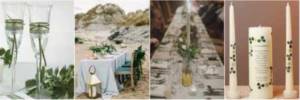
- Tables are covered with fabric tablecloths, often hand-embroidered.
- The floral compositions that decorate the feast are made of wildflowers. The presence of lavender is a must. Its smell is believed to ward off evil spirits.
- The dishes from which the guests will eat should be decorated with greenery and flowers.
- Irish style is very close to nature. Therefore, tables and the space around them are decorated with wood branches, greenery, and natural materials.
- The traditional drink at a wedding is Bunratty honey wine. Young people should definitely drink it. Because the appearance of a baby 9 months after the wedding is the merit of only that wine, so the beliefs say.
- The man begins to congratulate the newlyweds. He makes a traditional Irish toast, with wishes of happiness, eternal love and fidelity. The end of the toast is echoed by all the guests in unison.
- Bells are prepared for guests as a gift and souvenir of the wedding.
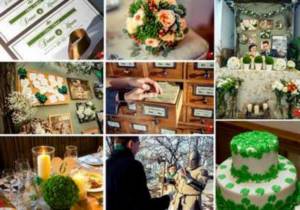
During the cheerful continuation of the holiday, traditional Irish ensembles are invited. This is a harpist, violinist and bagpiper. The music is so fiery that everyone starts dancing.
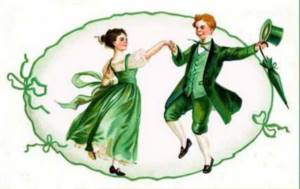
Under no circumstances should the bride lift her two feet from the ground while dancing - the fairies will pick her up and carry her to their lands. Also, in order not to attract the attention of evil spirits, the bride and groom should not sing at their own wedding.
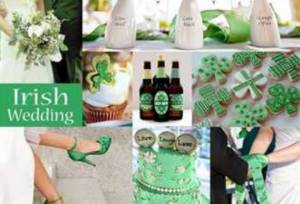
Irish wedding - customs and details
Irish wedding traditions are very beautiful and romantic. The warmth and hospitality of the people of Ireland have earned it the name “The Land of a Thousand Hellos”. Wanting to celebrate a wedding in a way that will be remembered for a lifetime, the Irish go to significant financial expense. It's not uncommon for couples to use five-star castle hotels for their ceremonies. A wedding looks great in a place like this.
Matchmaking in Ireland begins on January 6th. This tradition is associated with a church decree issued back in 1563 prohibiting matchmaking and weddings during Lent. The Irish decided that since it is impossible to get married during Lent, they need to get married in January and get married no later than Maslenitsa. The tradition of winter matchmaking has survived to this day. In Ireland, March 17 is considered the happiest day of the year - this is St. Patrick's Day, the patron saint of Ireland. A wedding on this day is a great success and happiness.
But “A wedding in April is a joy for the maiden and the lad,” so says the old Irish poem. The Irish also consider Wednesdays in November and the last day of the year to be good days for a wedding.
Despite wedding signs associated with good luck in family life, according to which: “Monday is for health, Tuesday is for wealth, Wednesday is the best day, Thursday is for losses, Friday is for crosses, and Saturday is not a single day of all.” !”, a large number of modern weddings in Ireland are celebrated on Saturday.
An Irish wedding is unique traditions, rituals, and signs that can decorate your holiday and make it original and unlike other weddings. This style is suitable for young people who want to have a surprisingly unique, beautiful and deeply symbolic wedding.
An Irish-style holiday can start with pre-wedding parties. A slightly strange, but very old custom on the eve of a wedding in Ireland is called “Aitin Gusak” . The groom comes to the bride's house. Baked goose is served on the table. Irish expression "His goose is cooked!" means that the young man is ready to get married. On this day, everyone who will be present at the wedding ceremony, including the priest, is invited to discuss all the details of the upcoming wedding, including financial issues.
After the “Aitin Gusak” ritual, the bride’s parents have the right to visit the groom’s house at any time, check how hospitable their future relatives are, and whether their daughter will live well in the new family. The tradition, hundreds of years later, has remained completely unchanged.

Set goals and achieve them!
Free master class “ACT! DOUBLE! X2". Today only the book “Set Goals” as a gift!
Pick up a gift
These rituals can be used for parties. You can end the parties with small celebrations. Remember, there is always a lot at an Irish wedding.
When decorating your wedding ceremony and reception venue, use the traditional colors of Ireland - green, orange and red. Don't forget checkered motifs and, of course, clover. The true spirit of an Irish wedding is the abundance of wildflowers and herbs. Delicate white and pink daisies look great alongside small purple crocuses and lush green leaves. Be sure to add lavender. In Ireland it is considered a symbol of love and devotion. Dishes, tablecloths, napkin rings and napkins themselves can be decorated with floral patterns. Place vases with wildflowers on the table.
Traditional Irish dishes are very simple and hearty - soda bread, meat and potatoes. Recently they have started serving salmon, trout, shrimp and oysters. The portions are very large. Guests are offered a large quantity of Irish whiskey and Guinness beer. The newlyweds are treated to Bunratty Meade honey wine, Ireland's oldest drink. In the old days, it was believed that drinking wine at a wedding imparted masculinity. The birth of a child exactly nine months later was certainly associated with the wine drunk at the wedding.
Perhaps the first month of marriage is called “honey” because the newlyweds drank wedding honey for a month after the wedding, which protected them from fairies who could come for the bride’s soul.
In Irish mythology, fairies adore beautiful things and are very fond of “stealing” brides. There are many legends about “spirited away” in the country. In order not to attract the attention of fairies, the bride should not wear anything green. Young people should not sing at their own wedding. If the bride lifts both feet off the ground while dancing, she will be carried away by the fairies. In the old days, the bride and groom, protecting themselves from the evil eye, ate three pinches of salt and oatmeal.
The custom of giving bells to newlyweds and wedding guests goes back centuries. The Irish believe that ringing bells keeps evil spirits at bay. According to Irish tradition, instead of clinking glasses at a wedding, you can ring small bells. Young people carry wedding bells throughout their lives. Their ringing reminds spouses of the vows taken at the wedding and helps avoid quarrels.
Small bells can be attached to wedding invitations. Use them to decorate small bonbonnieres filled with gifts for guests invited to the wedding.
In the bride's bouquet, lilies of the valley are good as a symbol of the bell. The Irish bride's bright wedding bouquet consists of wildflowers. Fragrant hyacinths, bluebells, tiny myrtle flowers, snow-white lilies of the valley, a lot of greenery. And, of course, lavender! Don't forget that the groom's boutonniere must match the bride's bouquet.
For the Irish, the bride is a forest nymph . She is dressed in a blue, lilac or white wedding dress, richly decorated with lace. The hair is braided into a beautiful braid, which is often decorated with fresh flowers, lace or ribbons. According to ancient belief, braids symbolize feminine strength and good luck. Often, instead of a wedding veil, the bride wears a wreath of wild flowers and herbs from which her bouquet is made.
The groom's look will be matched to the wedding style by a tie, cufflinks, headdress and boutonniere.
What Irish wedding would be complete without a Celtic harp, bagpipes and Irish dancing? The Celtic harp is the national emblem of Ireland. Since ancient times, harpists have played at wedding ceremonies and wedding banquets. Bagpipers will greet arriving guests at the entrance with unusually beautiful Irish music. No Irish wedding would be complete without the famous Irish step dance. Over the centuries it has turned into an incredibly beautiful dance, from which it is impossible to take your eyes off. Invited dancers in national costumes will be a real hit at your holiday.
In Ireland, the wedding ceremony begins with the abduction of the bride. Relatives and guests set off in pursuit of the “stolen” bride, groom and his friends, acting out the “kidnapping” scene. In the groom's house, his mother breaks oatmeal bread over the girl's head, symbolizing prosperity and prosperity, hope for friendship and harmony between mother-in-law and daughter-in-law.
An Irish wedding is very unusual, original and full of traditions . Horseshoes are considered a good addition to wedding gifts. Irish brides brought a real horseshoe to their wedding. Modern Irish brides use porcelain horseshoes or tie a fabric horseshoe around their wrist. To ensure that good luck came to the family and did not escape, after the wedding a horseshoe was attached above the front door, looking up.
The expression “ Tie a knot ” comes from the ancient Celtic custom of tying the hands of newlyweds before the wedding. The bride and groom hold each other's hands just above the wrist. Traditionally, braid, ribbon or cord are used in three colors: white, blue and red (innocence, fidelity and passion). They are wound around the hands in a figure eight, symbolizing infinity.
Wedding rings in Ireland are made in the shape of hands hugging a crown and a heart. The first ring in this design was made in the 17th century in the Irish fishing village of Cladagh near Galway. The ring has its own motto: “Let love and friendship reign.” They say that bad luck will befall the person who buys the Claddagh Ring for himself. Young people give rings to each other.
The groom wishes the joy and happiness of his beloved first. According to Irish customs, the man is the first to congratulate the newlyweds on their marriage. He makes the main toast of the ceremony: “When many years have passed from this day, your memories of this wonderful day will forever remain with you and will belong only to the two of you. We drink this honey and ask the Lord to bless you and not leave you with worries every day of your life.” All guests pick up this toast with the words: “On this special day of your life, we all wish you to take with you all the good things from the past, and only the best in the new. God bless you who drink this honey, and may you never know the need!”
Another charming custom. Throughout the wedding day, the bride must keep a special handkerchief - a symbol of the bride's fertility. You can wrap the wedding bouquet with a scarf or hide it in a special pocket of the wedding dress. The scarf is kept in the family and used during the baptism ceremony of the first-born.
Very popular at modern Irish weddings is the singing of a wedding song by two friends of the groom at the moment when the newlyweds cut the cake.
After the wedding ceremony is completed, the married men invited to the wedding seat the groom in the chair and carry him, as if he had joined the ranks of the married, three times around the wedding table.
There are many more customs and rituals that can be used when hosting an Irish-style wedding. Here are some of them:
When leaving the church , someone had to throw an old shoe over the bride's head. At this time, the groom throws coins over his shoulder. This ritual is believed to bring good luck to the newlyweds.
What would a bride be without a lace garter? The groom must remove it from his leg with his teeth! The garter can be green, white or gold. If you don't want a garter on your wedding stocking, wear a lace veil or drape a lace cape over your shoulders over your dress.
It is believed that those who marry during the waxing moon and high tide will be lucky.
A wedding on the Emerald Isle is unique and deeply symbolic, but this is precisely what makes it so amazingly beautiful and memorable.
Read on topic:
- 5 steps to creating the perfect wedding
- Wedding in the style of the Great Gatsby - a guide to action
Photos of wedding decoration in Irish style
Irish weddings are enchanting and breathtaking. It's like immersing yourself in a fairy tale. Below are ideas for wedding decorations in Irish style.
Other traditions
A broken glass on a wedding day is considered a bad sign. According to Irish tradition, Irish bread, lamb and shrimp should be on the festive table on the wedding day. A classic Irish wedding cake topped with ginger icing. After the wedding toast, the words in Gaelic are traditionally heard: “To health.” Another famous Irish wedding tradition involves throwing an old shoe over the bride's head as she leaves the church. And the groom throws coins over his shoulder when leaving the church. It also brings good luck to the newlyweds. It is also traditional to give bells at weddings in Ireland They believe that the ringing of wedding vows will remind them of their wedding vows. Also, during a quarrel between spouses, it is worth using wedding bells. There are also many traditional Irish sayings and proverbs that can be seen on wedding posters.
National Costume
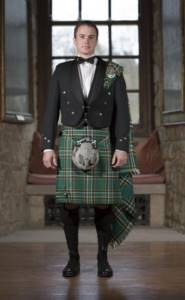
The national costume of an Irish man is considered to be a checkered kilt, cloak or sweater. However, these robes have undergone significant changes over time. No one will definitely remember the real Irish national costume. After all, its history begins somewhere in the 6-7th century. Then these were very simple clothes: a long linen shirt and a woolen cloak, always with a large hood.
Nevertheless, there were still decorations, but only among the rich segment of the population. As a rule, they consisted of embroidering the outer tunic. It was by this that one could distinguish the rich from the poor and even determine the scope of a person’s activity.
Today's costumes have become heavily Europeanized. Pants, sweaters appeared, and skirts were shortened. Women's dresses are decorated with ethnic patterns, and the kilt is predominantly checkered. The main color of clothes (and not only) is green. Additional colors are white and orange.
Culinary preferences
Everything about the kitchen is very simple and no frills. You could even say that the cuisine of Ireland is the Irish themselves. Simple, unpretentious. And, of course, delicious. Particular preference is given to potatoes and meat. This includes stew, colcannon, champ, fudge, Guinness pie, pickled herring, tea, beer and real Irish whiskey.
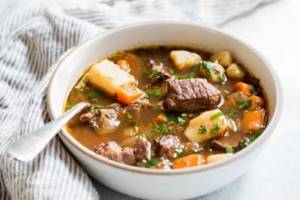
You don't necessarily need to go to a restaurant to have a good meal. Delicious food everywhere. Even in an ordinary pub you can be served freshly baked bread and black pudding. But don’t think that if the dishes are simple, they won’t taste good. This is a big misconception.
Irish lace
Irish lace is commonly used as a wedding tradition. It began in the 1800s when many families in Ireland lived in small thatched cottages on the land, producing crops for the Lord of the Manor. The peasants were “dirty poor” with little money for basic necessities. Then the potato epidemic struck between 1845 and 1851, destroying crops and forcing thousands of families into starvation.
The Ursuline nuns were familiar with Venetian lace brought from France. They used their knitting skills to help save people from starvation. They began training women to produce fine crochet work that became known as “Irish lace.” There were also wealthier Irish families who could cover the cost of purchasing lace. Families had their own designs and motifs and carefully guarded them, then they were passed down from mother to daughter. The details were kept so secret that many of them disappeared as families either died or fled poverty to other lands.
